


Background: The Frauen Warte was the Nazi Party’s biweekly illustrated magazine for women. The issues here are a sample of those published between 1935 and 1945, and provide interesting examples of Nazi propaganda directed to women. By 1939, its circulation was 1.9 million.
The University of Heidelberg has digitized all issues from 1941-1945.
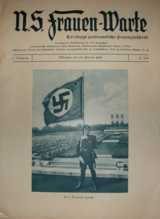 |
Issue Date: #17 1934/35 (Volume 2) Contents: The issue includes an article on the role of women in the Nazi state. |
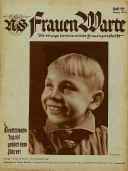 |
Issue Date: #22 1936/37 (Volume 5) Contents: The cover photo of the beaming lad is captioned: “Germany’s youth belongs to the Führer!” It includes a remarkable poem praising Hitler that faces a drawing of him. There are articles on the education of the youth, including one on the new German educational philosophy. |
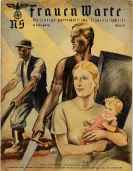 |
Issue Date: #20 1937/38 (Volume 6) Contents: The cover art shows a woman holding a happy child, defended by a man holding a sword and a farmer plowing the soil. There are articles on the importance of agriculture, a peculiar philosophical article on Nietzsche and race, the party’s training schools, and fashion. |
 |
Issue Date: August 1938 Contents: The cover caption reads: “Happy families are the best foundation of our people.” A poem titled “My Boy” has a mother saying that she will live on through her baby son. The first article discusses the importance of the home. The next is a letter from a mother with many children. Next follows an article on the importance of play for children. Another article covers a new marriage law. An illustrated article discusses a school for brides. There are six pages on fashion and cooking. |
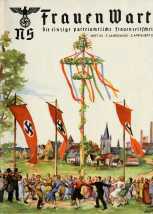 |
Issue Date: April 1939 Contents: The cover shows a village May Day celebration with a decided Nazi face. |
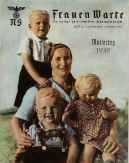 |
Issue Date: 1st May issue 1939 Contents: A Mother’s Day issue. |
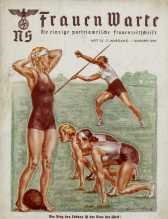 |
Issue Date: June 1939 Contents: The caption under the picture says: “The victory of life is the meaning of the world!” The lead article is on health education. |
 |
Issue Date: September 1939 Contents: The cover is on the 1939 Nuremberg Party Rally, which was to be the “Party Rally of Peace,” though it was canceled when World War II began. The first six pages cover the rally. The next article is by Gertrud Scholz-Klink, the head of the Nazi women’s organization. It is headed by the quotation: “The German woman must be able to think politically so that she can with pride feel, think and sacrifice as the one who maintains her people.” An article discusses the S. A. Another covers the city of Danzig, captured during the invasion of Poland. There is fashion news, and a pattern. |
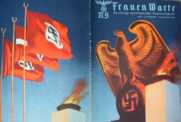 |
Issue Date: October 1939 Contents: The issue includes a note to the readers explaining why a women’s magazine is necessary during the war. |
 |
Issue Date: November 1939 Contents: The cover commemorates 9 November, the anniversary of Hitler’s 1923 Beer Hall Putsch. It was the “holiest” day on the Nazi calendar. There is a speech by Rudolf Hess to German women. There is also material on fashion and cooking. |
 |
Issue Date: January 1940 Contents: The cover shows a child making a snowball. The lead article is titled “Life Must Win,” and is a kind of meditation on the new year. There are articles on the war effort, and fashion material. |
 |
Issue Date: February 1940 Contents: The cover shows Hermann Göring with his daughter Edda. The first two pages claim England is responsible for the war. An article titled “The Expert Housewife of Today” discusses schooling for women in home economics. There is the usual fashion and homemaking news. |
 |
Issue Date: March 1940 Contents: The cover shows a house being constructed in conquered Polish territory. The caption: “Germany is building in the East.” Several articles deal with plans to resettle Germans in the newly conquered lands. There is fashion and homemaking news, including information on clothing rationing. |
 |
Issue Date: 1st April issue 1940 Contents: The cover shows a woman plowing, a factory producing, and a German soldier’s head. The point is “We’re all in this together.” The first article deals with farming women during war. There is an article criticizing life in England, and various material on fashion and homemaking, along with the best use of the clothing ration. |
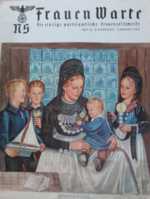 |
Issue Date: 2nd May issue 1940 Contents: This was the Mother’s Day issue for 1940. I’ve translated the lead editorial, titled “Mother’s Day 1940,” which claims that National Socialism has done wonderful things for women, and another piece discussing the Reich School for Brides. |
 |
Issue Date: June 1940 Contents: The cover shows German naval units in action. One article deals with relations between Germany and recently conquered Denmark. An article titled “Ready to Die/Ready to Live” promotes having children, even during war. Another deals with the experiences of children in camps. And there are articles on gardening, fashion (with a pattern), and home economics. |
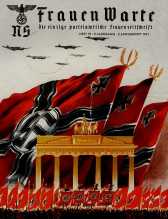 |
Issue Date: January 1941 Contents: The cover commemorates January 30, the anniversary of the Nazi seizure of power in 1933. This was a major national holiday during the Third Reich. |
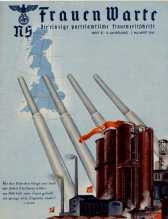 |
Issue Date: May 1941 Contents: The caption under the picture says: “The rhythm of labor resounds again in the factories; A nation has clenched the fist that will force you, England, to the ground.” |
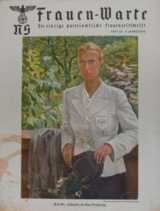 |
Issue Date: June 1941 Contents: The rather formidable woman on the cover is a BDM leader from Gau Salzburg. A variety of interior articles cover women working for the war effort. There is a contest on the theme “In which lands does the victorious flag of Greater Germany wave?” Ten pictures of various countries are to be identified. First prize is 100 marks. There are the usual articles on fashion and cooking. |
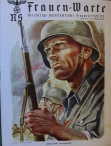 |
Issue Date: August 1941 Contents: The cover is a painting of German soldiers titled “Führer command — we will follow you!” The artist is Ernst Kretschmann. The lead editorial announces that the Soviet regime must be completely annihilated. Another article expresses the thanks of German mothers to soldiers. Then there is a peice on the opening of the annual exhibition of German art in Munich. |
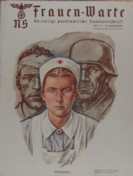 |
Issue Date: #13/1942 (Spring) Contents: The cover painting is captioned “Comrades.” A nurse stands in front of two soldiers, one of whom is wounded. Interior articles deal with the Bolshevist threat, the blessed future of German children once Germany wins the war, the work of nurses on the Eastern front, and two pages of Soviet cartoons. |
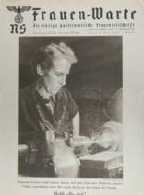 |
Issue Date: April 1943 Contents: The cover caption translates as follows: “German women always know that it is a matter of the existence or nonexistence of their people. Total war is the demand of the hour. Everybody help!” This issue appeared after Goebbels’ “Total War Speech” in February 1943, and just before Hitler’s birthday. The lead article, titled “Strength from Love and Faith,” encourages German woman to work hard as a kind of birthday present for the Führer. Other articles discuss women in factory work, German youth working in the East, and provide fashion suggestions and household hints. |
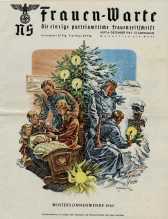 |
Issue Date: December 1943 Contents: The caption under the picture says: “Winter Solstice 1943.” It’s the Christmas issue, but the Nazis were a little nervous about putting too much emphasis on Christmas, so they preferred to look back to pagan celebrations of the change of seasons. The cover vividly embodies Nazi ideology: A new-born child in the cradle is surrounded by the family, while in the field soldiers mourn a dead comrade. The baby will carry on the chain of life. |
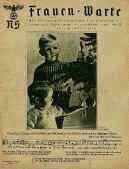 |
Issue Date: Late 1944 Contents: The caption under the picture says: “Despite battle, war and death, Christmas remains for us the festival of love and the faithful heart.” The issue has considerable material on Christmas. One article has the words of a soldier to women and children. There are recipes and suggestions for easily-made Christmas gifts. |
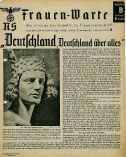 |
Issue Date: Early 1945 Contents: This is probably the last issue to appear. It contains several appeals to fight to the end. The lead article concludes in this way:
|
[Page copyright © 2002 by Randall Bytwerk. No unauthorized reproduction. My e-mail address is available on the FAQ page.]
Go to the German Propaganda Home Page.